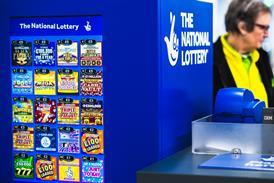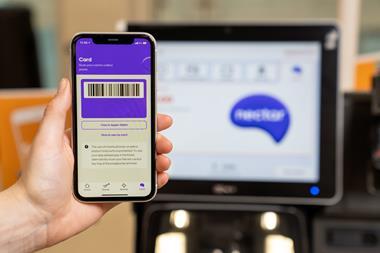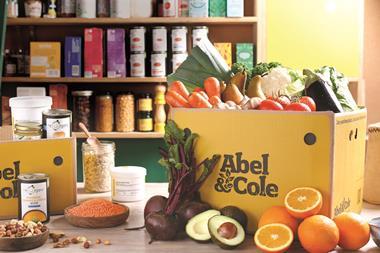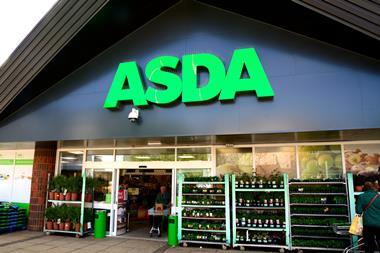Long expected consolidation among US e-tailers has arrived with the merger of HomeGrocer and Webvan. Belinda Gannaway reports
In the US the combination of a consolidating grocery industry plus shakiness about the huge sums tied up in e-tailers has led to the amalgamation of two pioneering online grocers, Webvan and HomeGrocer.
This week's $1.2bn tie up heralds the demise of the HomeGrocer brand, which operates in six metropolitan areas. Rival Webvan, which will shortly operate in four cities and has its headquarters in California, forged a paper deal with its Washington state based competitor.
The combine now provides a full grocery and non food offer to 264,000 "active" customers with an average annual spend of $5000. By the year end, it will operate in 13 US markets and 15 by the end of next.
In grocery, corporate Darwinism is big business and this deal shifts the focus to the pure online world. The only other online grocery deal saw Dutch giant Ahold buy the online service Peapod in April.
This week's deal puts Webvan ahead of Peapod and other smaller players including Netgrocer, a nationwide ambient goods replenishment service by post, and Streamline, a full grocery service operating in four cities.
The promise of the strengthened Webvan operation is great. Company chiefs boast a meatier platform for growth, marketing and overhead cost savings of $20m to $30m in the first year, and a neat strategic fit.
Webvan president and chief executive George Shaheen says: "This combines the strengths of the two premier online shopping and delivery companies, both with the capabilities to deliver the last mile of e-commerce. The combination will allow us to gain geographical spread faster and with less capital outlay in redundant operating costs, and concentrate our competitive focus on the brick and mortar competitors."
Mary Alice Taylor, chairman and chief executive of HomeGrocer, described the merger as "strategically compelling". She said: "We both believe in being a strong and pure internet play."
Consolidation in the pure play sector is essential. "Everyone has been anticipating consolidation," Netgrocer president Frederick Horowitz says. "The duplicate resources being applied made little financial sense."
Netgrocer, too, is looking for strategic alliances likely with bricks and mortar players. Horowitz believes the fit is logical. "Consumers understand there are different ways of shopping for ambient and fresh. Our offer complements the bricks and mortar store we're the ultimate partner."
As the likes of Wal-Mart and Safeway move into online sales, the small operators have to find some way forward. But while analysts applaud the rationale behind the deal in this world of global players there is no room for small local operators without a specialist niche appeal and home shopping is no longer enough they question whether Webvan will ever make money. These are the days of e-scepticism and with enormous capital outlays to develop dual operations from a standing start, neither company has shown a profit to date. Webvan is not committing to a date when it will do so either, only promising that, as it enters each market, it will break even in cashflow by the end of the fifth quarter.
Going forward, Webvan faces significant hurdles not least in integrating the businesses and technologies and realising the promised operational and capital savings.
Increasing doubts over the long-term profitability of e-tailing could prove an obstacle to further finance for expansion. However, Webvan remains bullish, pointing out that by leveraging and merging expansion plans, it will save $200m in capital investment. The $275m needed to fund expansion is half that required by Webvan alone.
And if the financial sector's coffers dry up a dramatic slump in the share price on the day of the announcement reflects continued uncertainty over the e-tail sector the company believes it can self fund growth over time through improved operating margins.
It aims to grow gross margins through better deals with suppliers, increased average order sizes currently at $98 and improved inventory controls to reduce spoilage.
Shaheen says: "Without the merger, both companies had to spend money to win customers from the brick and mortar alternative, then they had to spend money to win customers from each other. The total spend can now be more efficiently directed towards the brick and mortar competitors."
Webvan now has the unique advantage of two proprietary technology systems and fulfilment operations from which to siphon off the best of both. It has a larger scale approach with 350,000 sq ft central fulfilment centre hubs three times the size of HomeGrocer's serving smaller spoke depots and a high degree of automation. HomeGrocer has a high level of efficiency within a largely manual operation.
When the integration is complete, about nine months after the signing of the deal, Shaheen promises: "All of our competitive energies will now be focused on developing long-term loyal customers."
With a large emphasis on groceries about 80% to be reduced to 50% it is continually rolling out new categories and developing loyal customers with its 30 minute delivery window.
{{MANAGEMENT FEATURE }}
Close menu
- Home
- Retail & Wholesale
-
Products & Suppliers
- Back to parent navigation item
- Products & Suppliers
-
Product Categories:
- Back to parent navigation item
- Product Categories:
- Alcoholic drinks
- Bakery
- Cereals & breakfast
- Cheese
- Chicken & poultry
- Chocolate
- Confectionery
- Crisps, nuts & snacks
- Dairy
- Fish
- Fresh produce
- Frozen
- Household
- Meat
- Own Label
- Sauces & condiments
- Seasonal
- Soft drinks
- Vaping
- Vegan & plant-based
- World foods
- Suppliers
- People
- Reports & Data
-
Topics A-Z
- Back to parent navigation item
- Topics A-Z
-
Popular topics:
- Back to parent navigation item
- Popular topics:
- Cost of living crisis
- Crime
- Deposit Return Schemes
- Finance
- Government & Regulation
- Health
- Inflation
- Loyalty
- Marketing
- Mergers & Acquisitions
- New Product Development
- Sourcing
- Supply chain
- Sustainability & environment
- Technology
- Ultra Processed Foods
- Vaping
- A-Z all topics
- Content by type:
- Events
- Subscribe now
Sign in to comment on this article
Not logged in before? Register for FREE guest access today.
You will be able to:
- Read more stories
- Receive daily newsletters
- Comment on stories
Advert
















No comments yet